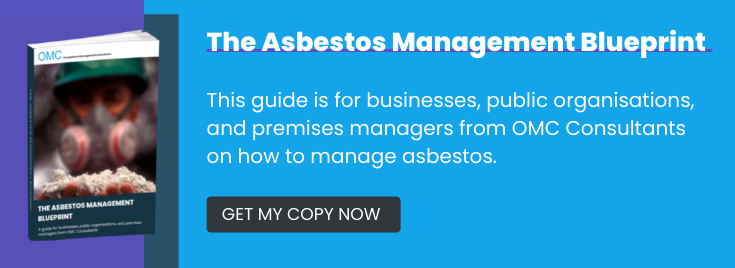If you are engaged in construction work, you will likely come across asbestos-containing materials (ACMs) at some point. It is important, however, to avoid exposure to asbestos fibres as they can cause serious lung damage and even cancer if breathed in. Therefore you should always establish a clear asbestos risk mitigation policy and procedure to ensure safe handling. Proper care in identifying and handling ACMs can avoid exposure, helping to keep you and your employees safe.
1) Identify The Risks And Communicate Them
All owners or managers of non-domestic buildings have a duty to manage asbestos safely. If you plan to carry out work on a building that might contain asbestos, you will need to conduct an asbestos risk assessment to identify the location of any ACMs, their type condition and quantity.
Employees and contractors should be informed of the whereabouts of any asbestos and must be able to consult the assessment report whenever necessary. Anybody who believes there to be a risk of asbestos that hasn’t been mentioned should raise it with their employer or duty holder.
2) Ensure Staff Are Trained And Protected
Appropriate training should be provided for staff working in the presence of asbestos, depending on their level of engagement with ACMs. Awareness training is mandatory for anyone who may run the risk of exposure to asbestos fibres at work, such as maintenance workers. Additionally, any staff required to remedy or remove asbestos should have licensed training in accordance with the Control of Asbestos Regulations 2012.
Using suitable protective equipment, including face masks can also significantly reduce the chances of exposure to asbestos fibres.
3) Use The Correct Cleaning Routines
Where there is the remotest possibility of ACMs being contained in waste materials as you work, it is imperative to keep your worksite clean. Avoid waste building up by cleaning as you go, to prevent asbestos from emerging and spreading. Any waste must be double bagged and disposed of properly at a licensed disposal centre.
It is also vital to use the right cleaning methods. Do not sweep or dust debris as this will increase the possibility of asbestos fibres being disturbed and spreading. Instead, use a Type H vacuum cleaner (constructed to BS5415 standards) and or wet rags.
4) Produce An Action Plan
Wherever asbestos is detected, you should put in place an action plan to manage any risks, updating it as required when conditions change. Your plan should contain your asbestos management procedures, covering requirements and best practices for workers handling or encountering asbestos. Where work is required, your plan should cover all procedures as well as the relevant controls to use.
It is also worth thinking about mitigation or removal measures for longer-term safety. Instead of encapsulation and preventative measures, consider removal over an extended period to reduce both risks and costs in the long run.
Asbestos Management Help From OMC Consultants
OMC Consultants is an accredited asbestos management consultancy with the expertise to help with all aspects of asbestos safety. We’re happy to work alongside duty holders to ensure that environments have been thoroughly tested and all requirements are met. For more information on how we can help you keep yourself and your employees safe, contact us today.

Image Source: Canva

